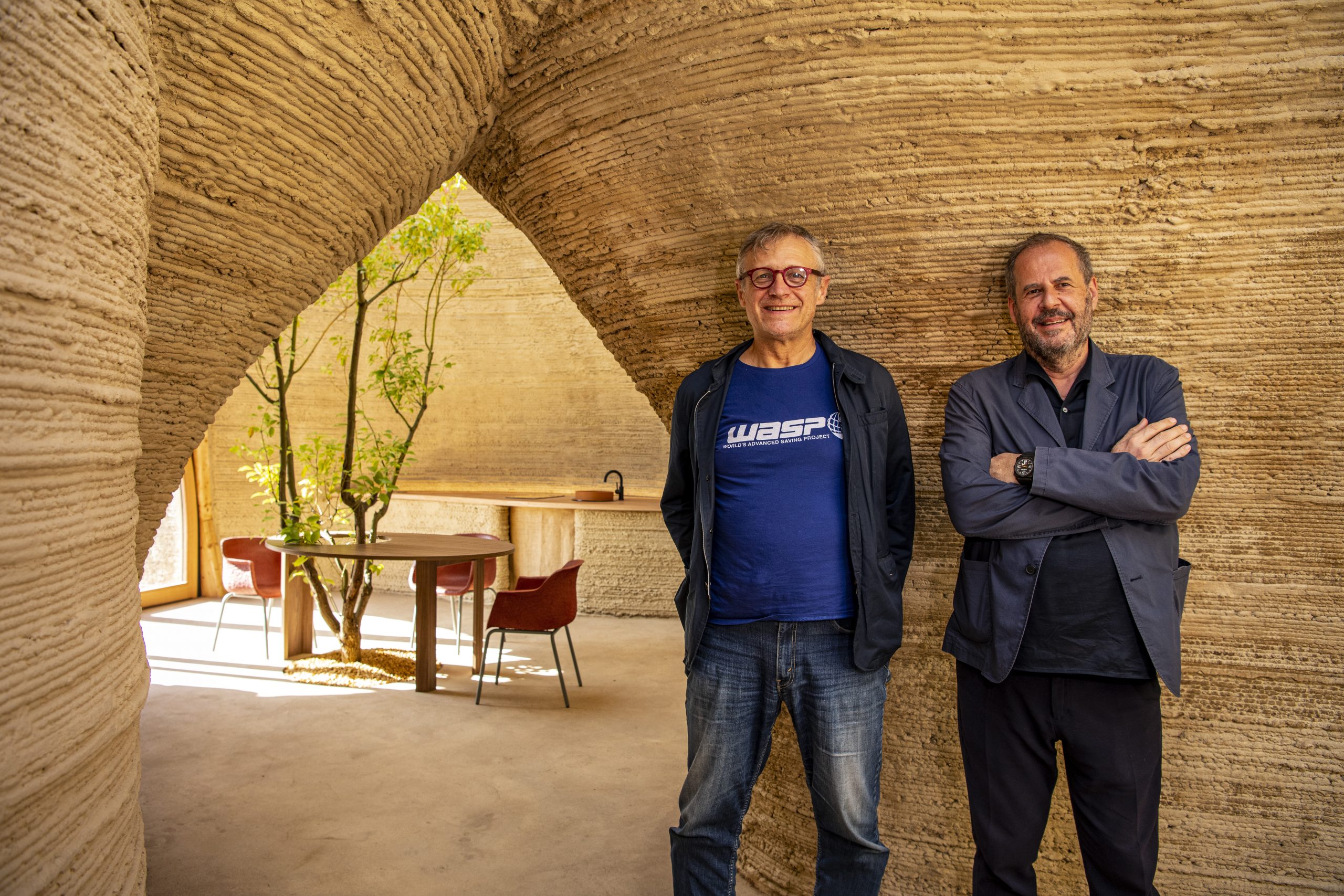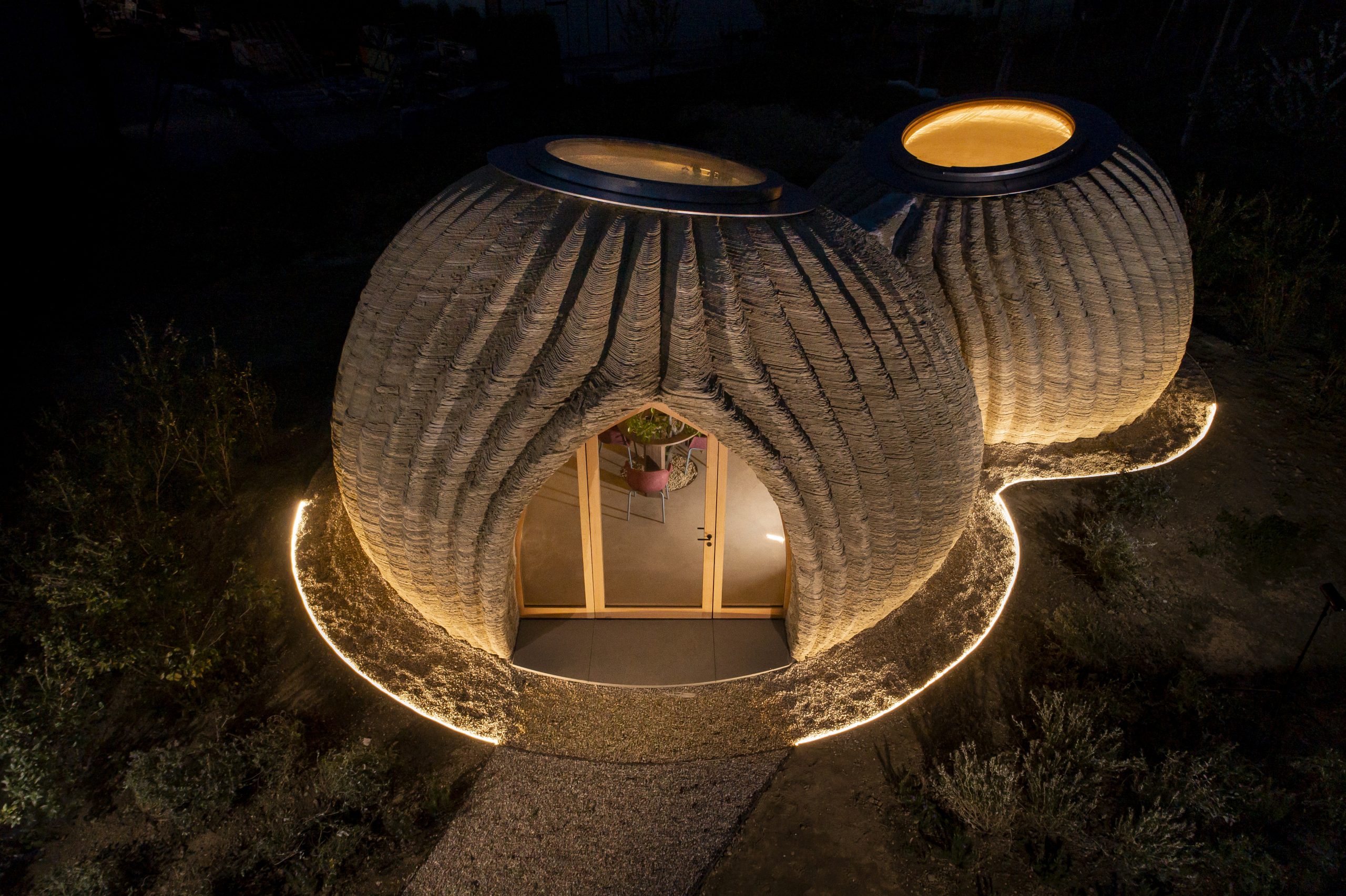Italian 3D printer manufacturer WASP and Mario Cucinella Architects (MCA) have officially completed the successful production and installation of an eco-sustainable housing model entirely 3D printed from local earth, TECLA.
Designed to be completely carbon-neutral and adaptable to any climate or conditions around the world, TECLA has been manufactured using entirely-recyclable materials. The eco-house was developed in response to the climate emergency and the growing need for sustainable homes in preparation for large migrations or natural disasters.
The 3D printing stage of the 18-month joint project was completed in January, and the sustainable building has today been fully-installed and formally opened in the Massa Lombarda region of Northern Italy.
“TECLA shows that a beautiful, healthy, and sustainable home can be built by a machine, giving the essential information to the local raw material,” said Massimo Moretti, WASP Founder. “TECLA is the finger that points to the moon. The moon is the home, as a birthright, for everybody on the planet. From TECLA on, that’s getting possible.”

Designing TECLA
WASP was founded by Moretti in 2012 with the aim of developing viable construction processes based on the principles of the circular economy. The firm believes 3D printing so-called ‘zero-mile’ homes using materials sourced from the local area could play a key role in solving the global population crisis.
WASP and MCA began planning the TECLA eco-house in October 2019, based on research from the School of Sustainability, an architect training center founded by Cucinella.
WASP had previously used its Crane WASP 3D printer to successfully build a small eco house for its Shamballa project – an eco-friendly technological village in Italy built using resourceful additive manufacturing.
The building, called Gaia, used raw soil from the surrounding area as the main binder of the printable material, mixed with natural waste materials such as vegetable fibers. In October last year, WASP partnered with the Rossana Orlandi gallery in Milan to showcase the project as part of the gallery’s “We Are Nature” event.
Leveraging the success of the Gaia project, WASP and MCA embarked upon creating the TECLA self-supporting habitable structure in much the same way, depositing layers of reusable materials such as local soil one on top of the other to form the dome-shaped building.

3D printing the bio-based house
Once again, WASP deployed its modular and multi-level Crane WASP 3D printing system to fabricate the TECLA structure, using entirely natural and locally-sourced materials for the feedstock.
Two synchronized robotic printer arms deposited the material in 12mm layers simultaneously, having been programmed to avoid collisions and ensure streamlined operation. Each modular printing unit is capable of printing within a 50 square meter area, making it possible to build independent housing modules in a number of days.
In fact, the technology enabled the TECLA housing model to be completed in around 200 hours of printing, consisting of 350 12mm layers and 150km of extrusion and using just 6kwh of energy.
In its finished state, the TECLA boasts an area of 60 square meters, comprising a living zone with a kitchen, and a night zone. The building is also equipped with furnishings that were partly printed from local earth and integrated into the structure and partly designed to be recycled or reused.
“We like to think that TECLA is the beginning of a new story,” said Mario Cucinella, Founder and Creative Director of MCA. “It would be truly extraordinary to shape the future by transforming this ancient material with the technologies we have available today. The aesthetics of this house are the result of a technical and material effort; it was not an aesthetic approach only. It is an honest form, a sincere form.”

Achieving a circular housing model
The TECLA project aimed to combine research on construction practices, bioclimatic principles, and the use of natural and local materials to address the growing need for sustainable housing. As such, TECLA is designed to be a pioneering example of low-carbon housing.
In addition to considering its aesthetic, MCA also explored the building’s shape in relation to climate and latitude. The composition of the 3D printable earth mixture was tailored to respond to local climatic conditions, while the filling of the envelope was parametrically optimized to balance the building’s thermal mass, insulation, and ventilation depending on its surrounding environmental conditions.
WASP and MCA hope that the TECLA, now officially completed and installed at its Massa Lombarda site, will provide a viable, zero-waste, low-carbon housing example that could play a significant part in addressing the global housing emergency the world will face in the years to come, as natural disasters, climate change and other events cause mass migration across the globe.
Subscribe to the 3D Printing Industry newsletter for the latest news in additive manufacturing. You can also stay connected by following us on Twitter and liking us on Facebook.
Looking for a career in additive manufacturing? Visit 3D Printing Jobs for a selection of roles in the industry.
Featured image shows the TECLA 3D printed house. Photo via WASP.



